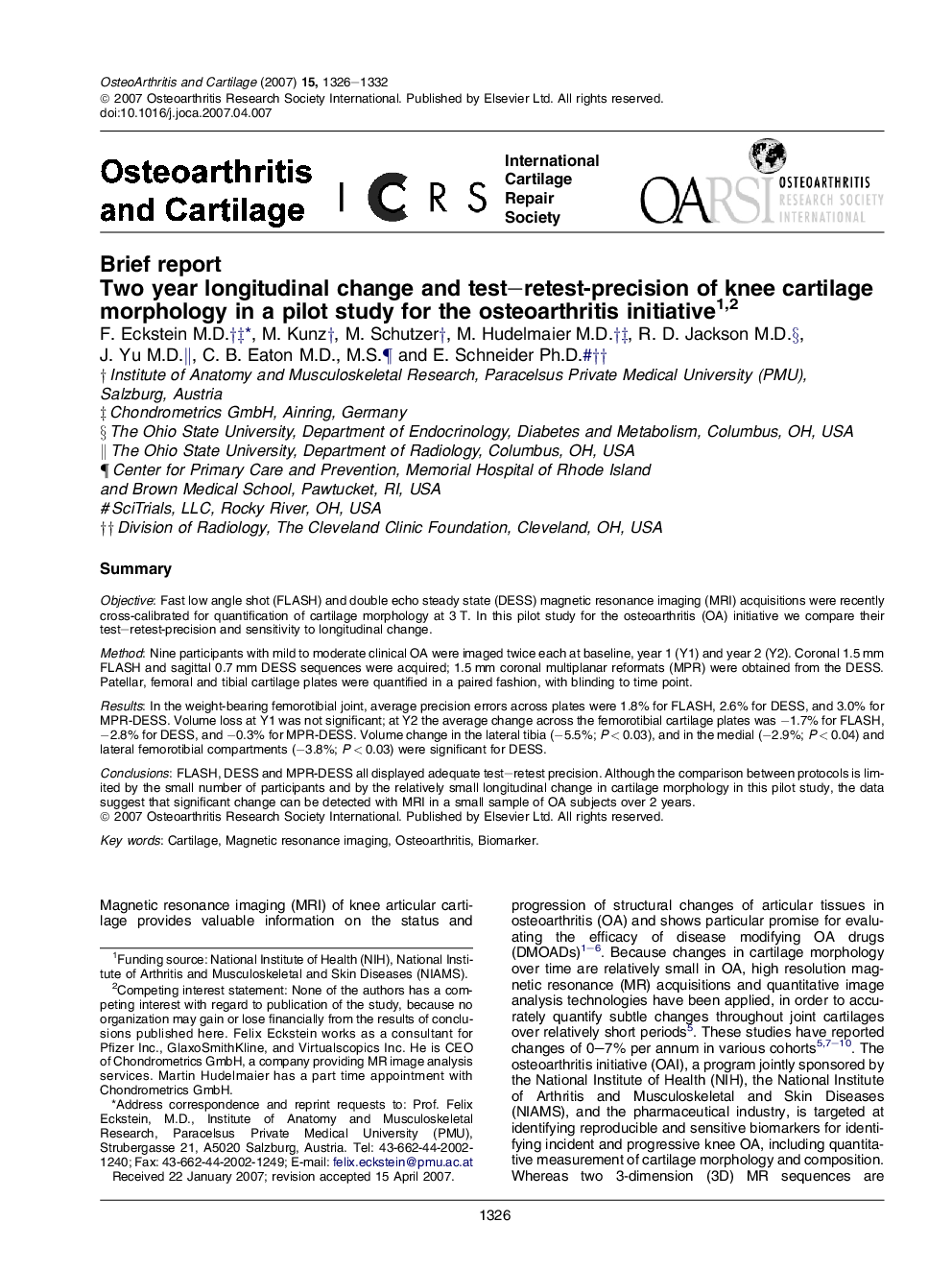| Article ID | Journal | Published Year | Pages | File Type |
|---|---|---|---|---|
| 3381248 | Osteoarthritis and Cartilage | 2007 | 7 Pages |
SummaryObjectiveFast low angle shot (FLASH) and double echo steady state (DESS) magnetic resonance imaging (MRI) acquisitions were recently cross-calibrated for quantification of cartilage morphology at 3 T. In this pilot study for the osteoarthritis (OA) initiative we compare their test–retest-precision and sensitivity to longitudinal change.MethodNine participants with mild to moderate clinical OA were imaged twice each at baseline, year 1 (Y1) and year 2 (Y2). Coronal 1.5 mm FLASH and sagittal 0.7 mm DESS sequences were acquired; 1.5 mm coronal multiplanar reformats (MPR) were obtained from the DESS. Patellar, femoral and tibial cartilage plates were quantified in a paired fashion, with blinding to time point.ResultsIn the weight-bearing femorotibial joint, average precision errors across plates were 1.8% for FLASH, 2.6% for DESS, and 3.0% for MPR-DESS. Volume loss at Y1 was not significant; at Y2 the average change across the femorotibial cartilage plates was −1.7% for FLASH, −2.8% for DESS, and −0.3% for MPR-DESS. Volume change in the lateral tibia (−5.5%; P < 0.03), and in the medial (−2.9%; P < 0.04) and lateral femorotibial compartments (−3.8%; P < 0.03) were significant for DESS.ConclusionsFLASH, DESS and MPR-DESS all displayed adequate test–retest precision. Although the comparison between protocols is limited by the small number of participants and by the relatively small longitudinal change in cartilage morphology in this pilot study, the data suggest that significant change can be detected with MRI in a small sample of OA subjects over 2 years.
